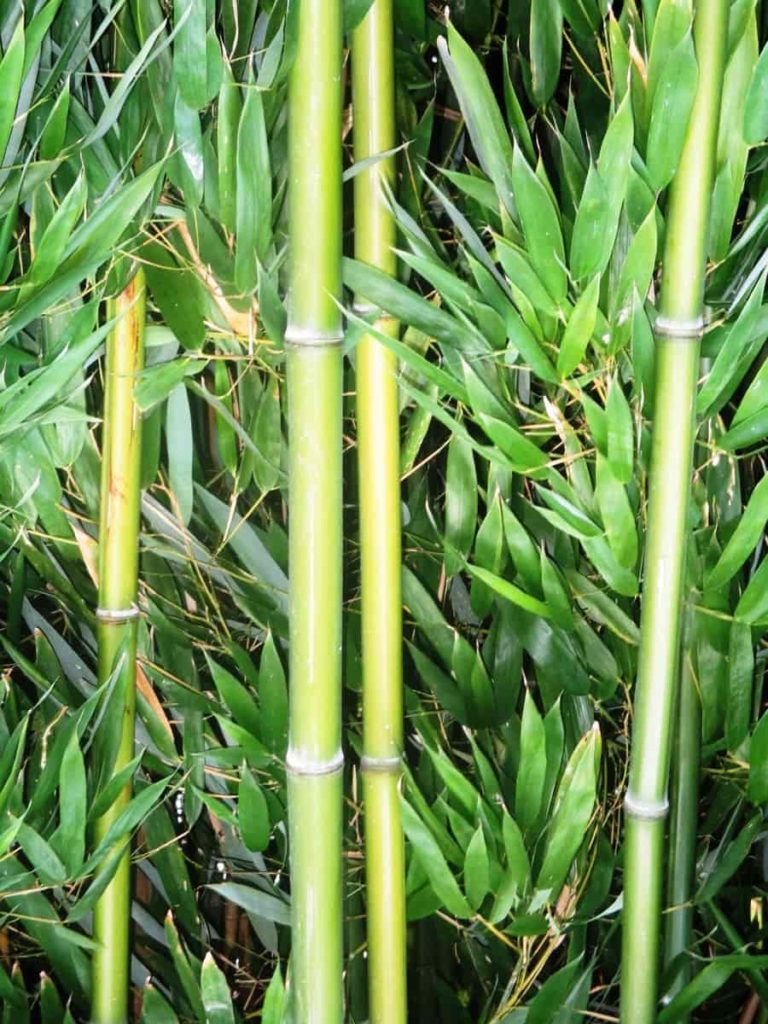Bamboo is one of the strongest, hardiest, and fastest growing plants. But that doesn’t mean it’s invincible with problems. As any gardener knows, even the easiest plants can face unexpected obstacles, and maintaining a permanently healthy garden is hardly a no-brainer. However, growing healthy Bamboo can be fun and beneficial and not particularly difficult.
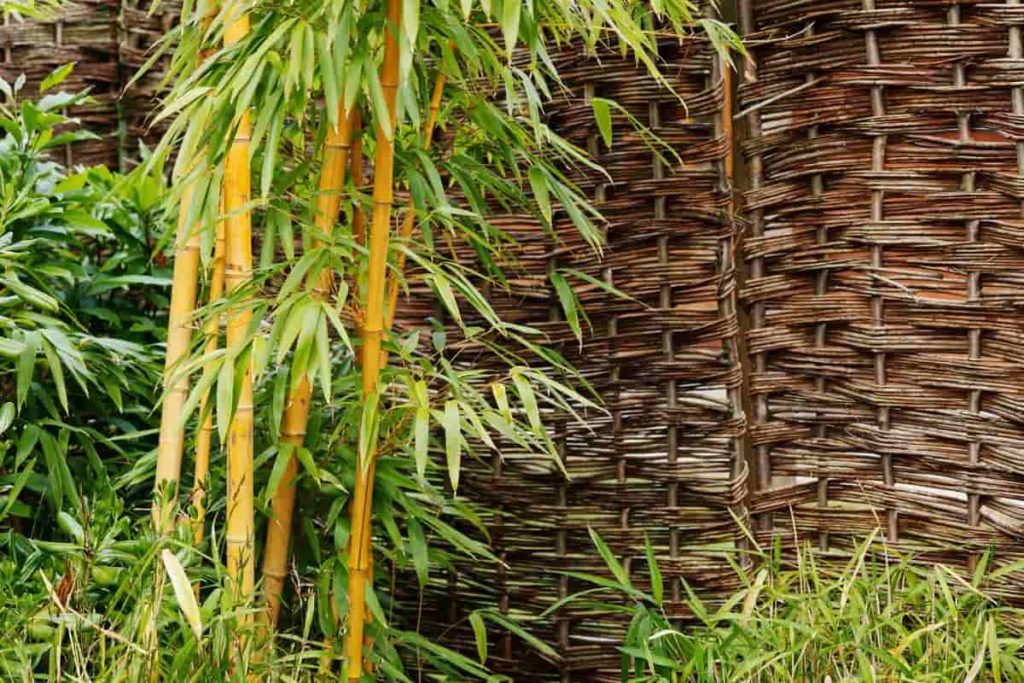
But even a green-thumbed gardener can run into occasional challenges with Bamboo. Bamboo’s healthy stand surprisingly resists pests and diseases. Nevertheless, you can occasionally see spots and discolors that indicate problems.
Common bamboo plant problems
Yellow Bamboo leaves
Bamboo is a popular decorative plant. Many homeowners and gardeners plant Bamboo as it can screen unwanted ideas or create private space. Bamboo is growing rapidly and spreads rapidly. Bamboo, like all decorative plants, has some requirements to stay healthy. True Bamboo has a hollow stem and shiny green leaves. If your Bamboo leaves are yellow, it could be a sign that your plant is failing.
Bamboo is an evergreen plant. All evergreen plants lose their leaves, but they don’t lose them all simultaneously as their deciduous friends. Dropping some yellow Bamboo leaves is a common practice throughout the year. There will be some more leaf loss in spring. So, it’s probably normal if your Bamboo stem and leaves turn yellow. However, if large portions of Bamboos are turning yellow, you probably have a problem.
Solution – Annoying yellow Bamboo leaves can be caused by low nutrients, soggy soil or more water, dehydration, or stressful growing conditions. Check the soil regularly if you want help with the yellow Bamboo leaves. Bamboo needs good drainage. If the soil is dirty and soggy, you are watering more, or the Bamboo is planted incorrectly.
You must increase your irrigation time and frequency if your soil is dry. Remember that Bamboo plants spread wide every year. As the Bamboo grows, you will need to adapt your irrigation setup. Let the Bamboo leaf litter stay on the ground rather than rake it up. This helps in keeping moisture in the soil.
In case you missed it: How to Prepare the Soil for Bamboo Plants: A Beginners Guide for Best Soil Mix, pH, and Compost

Bamboo plants like acidic, rich, loamy soil. Bamboo benefits from regular, annual applications of organic compost. Organic compost provides a variety of soil nutrients at a nominal rate. It also helps in having soil nutrients for your Bamboo plants to use and opens up heavy clay soil does not well.
Brown tips on Bamboo leaves
Pests are often responsible for Bamboo with brown tips; the culprits are likely sap-sucking pests such as mites, mealy bugs, scales, or aphids.
- Mites – These small pests, which are challenging to see with the naked eye, are widespread during dry weather when Bamboo leaves are dusty. If you suspect mites, find fine webbing on small spots and leaves.
- Aphids – Aphids are common sap-sucking pests, leaving small aphids uncontrollably can cause much damage. Although the aphids are usually green, they can be tan, brown, red, yellow, grey, or black.
- Scales – Scales are small, sap-sucking pests recognized by their waxy, brown, or tan shell-like cover.
- Mealybugs – These common Bamboo pests are easy to find from their white, cotton protective cover. Then, ants and sooty mold can result in an attack on the mealybugs.
Solution -Most sap-sucking pests are relatively easy to control by spraying plants with insecticidal soap or neem oil. If the attack is mild, then a strong blast of water with a spray nozzle can be enough to knock them off the leaves. Chemical pesticides are generally unnecessary and cause far more harm than good because toxins kill flies, ladybugs, and other beneficial insects.
Environmental conditions can also lead to the browning of Bamboo plants.
Heat – Too much heat or direct sunlight can cause brown leaves on Bamboo plants.
Solution – Most varieties of Bamboo prefer shadow or partial sunlight.
Water – Both under and overwatering can cause Bamboo with brown tips.
Solution – A new Bamboo plant benefits from watering once or twice a week until the plant reaches the three to six-month mark. After that time, in-ground usually does not require any supplementary irrigation. When it comes to pot Bamboo, the dry side is a little always better than wet, soggy soil. A mature Bamboo plant will tell you when thirst occurs; do not water the plant until the leaves start to curl.
Fertilizer – Be careful about using too much fertilizer, which can be responsible when Bamboo plant tips are brown.
Solution – Even natural fertilizers, such as fish emulsion, can contain salts that can burn Bamboo leaves. So, you should use fertilizers as per the manufacturer’s instructions.
In case you missed it: Best Fertilizer for Bamboo: Organic, Homemade, Natural, Liquid, NPK, How and When to Apply
Winter damage – Most Bamboo varieties tolerate winter. However, cold weather can burn many types of Bamboo leaves. Some leaves may also fall from the plant but will soon replace with new ones.
Bamboo has not grown
Sometimes Bamboo plants get stuck in a specific size and don’t seem to grow any bigger, although they will look healthy. Bamboo plants can also have problems in being viable, where the plant cannot produce new shoots. This happens when there are no longer any live buds on the rhizomes and is effectively the death penalty for the plant. So although the plant will often look very healthy, it will eventually die because it cannot produce new, healthy growth. If so, the upper part of the plant will usually look unusually thick with dark green leaves.
Solution – If the plant has been like this since you planted it, the first solution is to move the plant. They may need more space, or they may need more or less water or sunlight. Fertilizers and mulching will often help in starting a plant in this situation. Water Bamboo in containers every one to three days. Water the newly planted Bamboo with five gallons of water daily for four or five days, then water again if the leaves of the plant start turning. 3-inch organic matter like mulch Bamboo with garden compost to help maintain moisture in the ground.
If your plant had grown for many years and then stopped, it might have reached its maximum height. The height of wide varieties of Bamboo is predetermined, which they will never overtake. Although runners will continue to expand outside after reaching their full height, they will continue to send shoots, making the plant denser. If you are sure your plant has not reached its maximum height, the container is likely very crowded. Regular thinning usually makes plants grow faster.
Bamboo leaves curling/drooping
Both these issues caused because of watering methods. To find out what’s to blame, review the shape of your plant.
If the leaves have become curled with their length, it shows that your plant is underwater and needs to increase its water frequency.
Solution– You must wet the ground well and bring the plant back to health over time. Please use moderation to avoid giving the plant more than it needs.
If the leaves are drooped downwards, the plant is getting too much water, or there is a problem with drainage.
Solution – For too much water, you must step back and give the plant time to recover before following a less intensive watering program. If soil is a problem, you need to add well-drained material to the soil to make it easier to drain water. For both of these issues, you may have better luck preventing them from happening again by investing in a moisture gauge.
Dying Bamboo plant
The five main causes of dying Bamboo are high temperature, poor soil condition, pest attacks, and water or light problems.
In case you missed it: Bamboo Polyhouse Construction: Design, Subsidy, and Cost in India
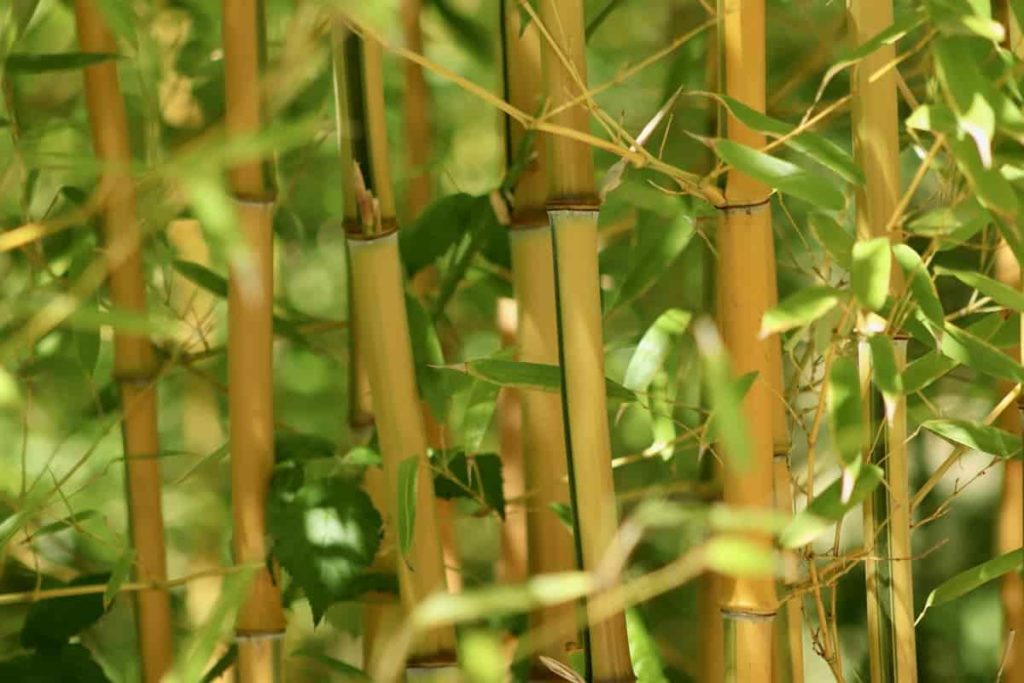
Solution – Bamboo plants are one of the most versatile plants you can ever grow, although some species are better tenants than others in different climate conditions. Wide varieties of Bamboo can withstand extremely cold temperatures when planted outside. However, planting your Bamboo outside leaves little chance of temperature decreasing, with a Bamboo plant indoors requiring a specific temperature range that will boost healthy growth.
Bamboo is considered an outdoor plant, and although many have managed to grow them indoors, it is more complicated. The Bamboo plants have a fast-growing rhizome root system that grows very aggressively and needs a lot of nutrients to fuel the plant’s rapid growth. Each type of Bamboo has its favorite soil condition, but most prefer soil with loamy, light in structure, and organic matter and nutrients.
Almost all varieties of Bamboo require regular water, and their shallow rhizomes and roots need to be watered at least once a week. If your Bamboo plant is in a hot climate, it is recommended to water more often, especially during summer, say 2-3 times every week. All the Bamboo varieties can thrive in the proper light condition, and the amount of preferred light varies from one species to the next.
All Bamboo varieties prefer at least 6 hours of direct sunlight per day, and as a rule of thumb, sunlight is just as good. Wide types of Bamboo will tolerate low light or partial shadow conditions, but it is better to check with the nursery attendant before purchasing. While most varieties of Bamboo are strong and resilient to pests, an attack by pests and bacteria can cause serious problems to your Bamboo’s health, especially when untreated.
Mealybugs, beetles, mites, aphids, scales, and Bamboo mites are all problems for any Bamboo plant. You can remove most pests using non-chemical solutions or insecticidal soaps. Check your Bamboo plants for pests regularly, and if you get any indication of pest or bacterial attack, it is better to act quickly and give a solution to the pesticide.
Diseases
Fungal spots
Fungus spots like rust sometimes appear on old plants. The spots are round and mostly cosmetic. They often occur in humid climates.
Solution – You can treat this disease with copper-based fungicides, but since plants with spots are old, consider killing them to make room for younger and more vigorous plants.
Bamboo mosaic virus
This virus is usually obtained in nursery order and transmitted to the blade of pruning tools. The first symbol is the mosaic discoloration pattern on the leaves. You will finally see the dieback starting from the top of the plant.
In case you missed it: Bamboo Planting Ideas, Methods, Tips, and Techniques
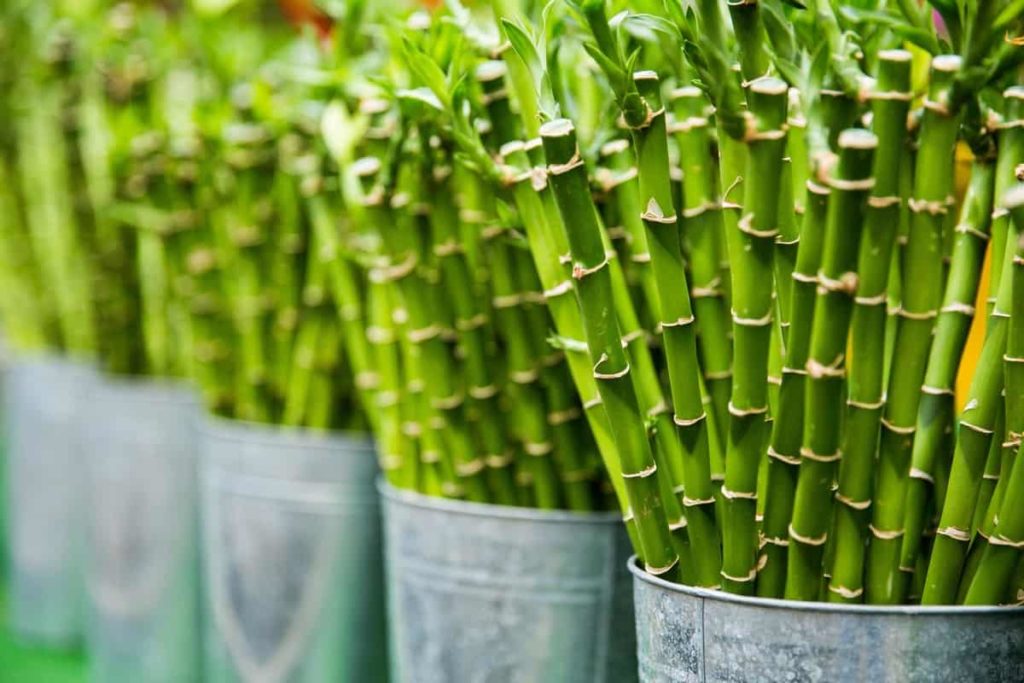
Solution – There is no cure for the disease, but you may be able to keep plants alive for a while with aggressive harvesting. Remember to de-sterilize those who prune between the cuts.
Sooty mold
The sooty mold is caused by small, sucking pests such as mealy bugs, aphids, and scale insects. When they eat, they emit a sticky substance called honeydew.
Solution – Get rid of pests with insecticidal soap or oil frequently. Follow the label instructions, and repeatedly apply as per instructions, permission until the pest is removed. With oil, it is essential to follow the time guidelines on the label.
Rot problems
Root rot and heart rot also affect Bamboo. Heart rot is a fungus living inside the stem and can happen in any part of the stem. Root rot affects the roots and lower stem. Any rot can be accompanied by mushrooms growing on the Bamboo or the base of the plant.
Solution – These diseases cannot be treated and eventually kill the plant. Remove plants, taking care to remove all roots to prevent the disease from spreading to other plants.
Pests
Aphids
Several types of aphids feed on Bamboo. Small, fined, soft-bodied pests suck fluid from plants. Severely affected Bamboo leaves have wilted, and growth has stopped. The aphids produce several species yearly and are seen in different colors by species. When they feed, they emit sticky honeydew that hosts a sooty mold.
Solution – Gardeners use light pesticides such as neem oil to control and eliminate the aphids. Lady Beetle eats the aphids and helps keep them under control. If mild pesticides don’t work, you should use environmentally friendly pesticides in your yard and home.
Bamboo Mites
Bamboo mites leave yellow stripes and splotches visible on the leaves. They live under the leaves in colonies under small white woven covers. Like the aphides, they suck chlorophyll-like fluids from plants.
Solution – You can use the miticide spray available in nurseries to kill pests. Follow instructions carefully when using chemicals to kill adults and newly placed Bamboo mite eggs.
Bamboo Mealybugs
Mealybug is a light-colored, waxy, segmented bug. Like the aphids, they also leave sticky honeydew on plants. Damage from mealybugs can include light-colored, waxy residues and colorless, distorted leaves, and bad stem diseases. The intense attack kills new shoots and old trunks.
Solution – To fight the mealy bugs, spray pesticides.
In case you missed it: Indoor Bamboo Plant Care – Tips, Ideas, Secrets
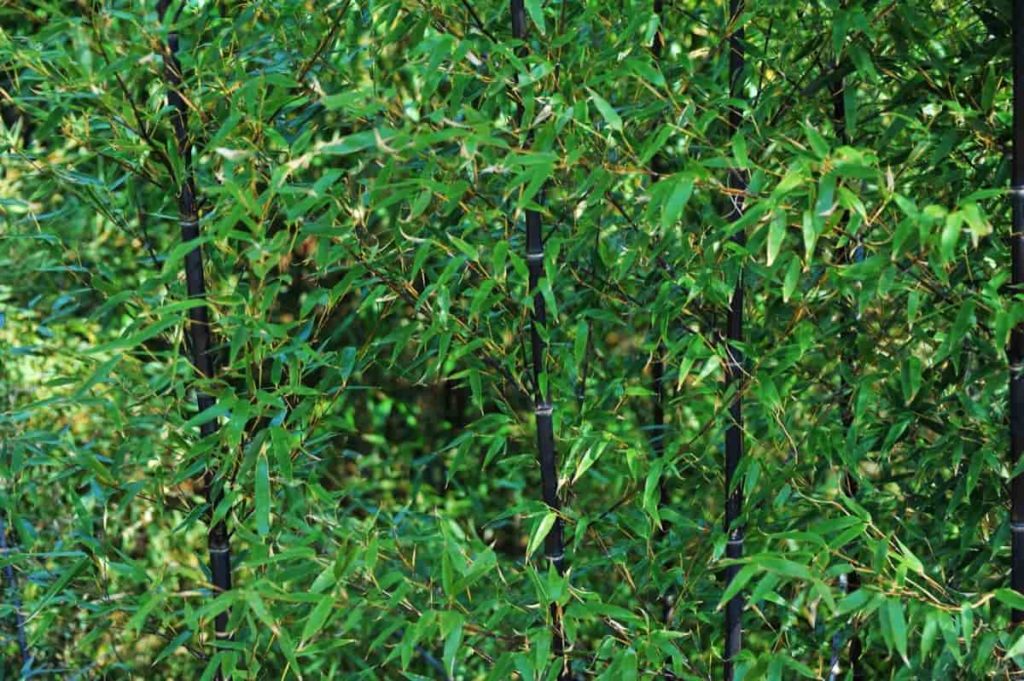
Conclusion
Bamboo is popular among the gardeners of the house from its hardness and numerous uses in landscaping and home décor. This fast-growing plant is found in many places around the world. Although Bamboo is strong and resistant to various weather conditions, it is also sensitive to pests that damage plants and spread fungal diseases.
Detecting infections soon can prevent you from using strong chemicals to fight pests. Your best defense is maintaining a proper distance between your Bamboo plants for air circulation and water plants on the base rather than in the middle of dense leaves.
- Flower Garden Designs and Layouts for Beginners
- Planting and Spacing Techniques in Papaya: A Beginner’s Guide
- Growing Gold: Essential Techniques for Planting Pineapples
- How to Make Kalanchoe Plant Bushy: Home Remedies and Solutions
- 11 Reasons Why Your Gardenia is Not Blooming: Home Remedies and Solutions
- Eco Elegance: The Guide to Designing a Drought-Tolerant Landscape
- Gardening on a Slope: Strategies for Hillside Landscaping
- Nourish and Flourish: Top Organic Mulches for Thriving House Plants
- Everything You Want to Know about Indian Mogra Flower: Discover Uses and Growing
- Green Thumb Success: Expert Tips for Cultivating Greenhouse Pumpkins All Year Round
- Maximize Growth & Flavor: The Ultimate Guide to Companion Planting in Herb Gardens
- How to Control Rhododendron Problems Naturally: Home Remedies and Organic Ways to Fix Them
- Natural Magic: The Remarkable Benefits of Cinnamon for Plants
- Best Steps to Revive Dying Tulip with Natural and Organic Treatment
- 10 Reasons Why Your Angel Trumpet is Not Blooming: Remedies and Treatment
- How to Fix Periwinkle Leaf and Flower-Related Problems: Natural Remedies and Solutions
- How to Fix Zinnias Leaf and Flower Problems: Discover Natural and Home Remedies
- Organic Steps to Induce Lemon Tree Flowers: A Comprehensive Guide
- Bloom Booster: Crafting the Perfect Homemade Bougainvillea Fertilizer
- Optimizing Growth: A Guide to Applying NPK Fertilizer for Potted Plants
- 10 Best Homemade Fertilizers for Rubber Plant: DIY Recipes and Application Method
- How to Boost Female Pumpkin Flowers: Effective Steps for More Flowers and High Yields
- Transform Your Indoor Garden: Top Benefits of Pink Salt for Houseplants
- 10 Best Homemade Fertilizers for Peacock Plants (Calathea): Easy DIY Guide
- Unlock Blooms: 9 Reasons Why Your Potted Chrysanthemum is Not Blooming
- 8 Reasons Why Your Potted Hibiscus is Not Blooming: Fix it with Simple Solutions
- Unlock Blooms: 9 Key Reasons Your Potted Frangipani Won’t Flower
- 10 Reasons Why Is My Ice Plant Not Blooming: Remedies and Treatment
- 10 Reasons Why My Potted Hydrangea Not Blooming: Treatment and Remedies
- 10 Reasons Why is My Wisteria Not Blooming: Remedies and Treatment
- 10 Reasons Why is My Goldfish Plant Not Blooming: Remedies and Treatment
- Maximize Your Space: Ultimate Guide to Balcony Gardening with Grow Bags
- 10 Reasons Why Your Iris is Not Blooming: Remedies and Treatment
- 10 Reasons Why Your Anthurium Plant is Not Blooming: Treatment and Remedies
- 10 Reasons Why Your Aquaponic Plants Are Not Flowering: Remedies and Treatment
- 10 Reasons Why Your Agapanthus is Not Flowering: Remedies and Treatment
